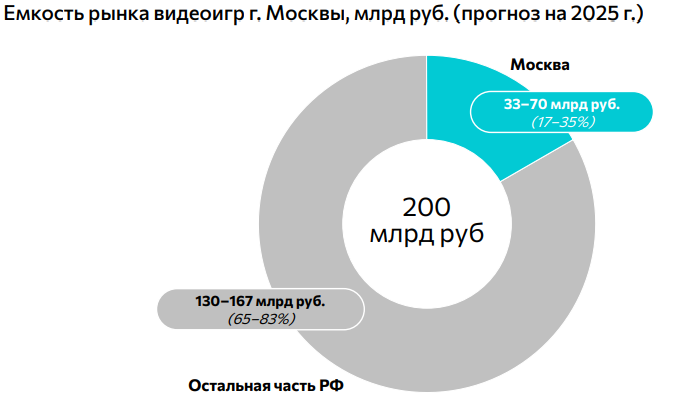Study: In 2025, the volume of the Russian gaming market will reach 200 billion rubles, with a third accounted for by Moscow
Strategy Partners, together with the Agency of Creative Industries (ACI) and the RVA association, conducted a large-scale study of the Russian gaming market. The report pays significant attention to the situation in Moscow.
Below are the key figures.
- The Russian market is consistently growing. According to the forecast, its volume will reach 200 billion rubles this year—7% more than in 2024.
- Experts identified mobile games as the main growth driver. However, it's not limited to them. The development of the indie segment in the country and the increased interest of Russian gamers in projects by domestic teams will also play a role. Additionally, the market will partially grow due to experiments with blockchain games and import substitution—many gaming companies have switched to Russian solutions for distribution and monetization.
- According to preliminary estimates, Moscow will account for 17-35% of the entire Russian gaming market volume in 2025, which equates to 33-70 billion rubles.
- In 2024, the gaming industry's contribution to Moscow's economy was 37.7 billion rubles. Of this, 17.2 billion rubles were a direct contribution to Moscow's gross regional product, 15.8 billion rubles were indirect effects from companies' expenses, and another 4.7 billion rubles were induced effects from employee spending.
- The top three game companies in Moscow by revenue in 2024 were Lesta Games (25 billion rubles), Astrum Entertainment (9.4 billion rubles), and Innova (2.85 billion rubles).
- Currently, 5,000 to 10,000 full-time employees work at Moscow gaming companies. If freelancers and self-employed individuals are counted, the number of game development specialists increases to approximately 40,000-50,000.
- The average salary of Moscow developers is 170,000-180,000 rubles.
- In the report, experts also provided an updated forecast for the Russian gaming market for 2030—the previous one they shared a year ago. Their estimates are now more optimistic. Whereas analysts previously expected the market volume to fluctuate between 203 and 327 billion rubles in 2030, they now anticipate a range of 213 to 371 billion rubles.


